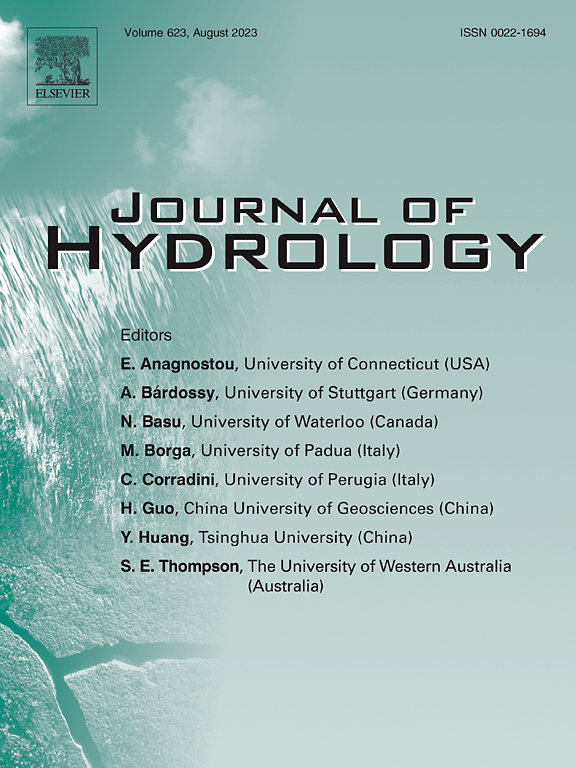Local scour around bridge abutments in vegetated beds under ice-covered flow conditions – An experimental study and mathematical assessment using machine learning methods
IF 5.9
1区 地球科学
Q1 ENGINEERING, CIVIL
引用次数: 0
Abstract
Local scour around bridge abutments is a critical process that can cause bridge failures, posing substantial environmental risks. Accurate estimation of the maximum scour depth around bridge abutments is crucial for bridge design. In the current study, extensive experiments have been conducted in a large-scale outdoor flume to investigate local scour around the bridge in the presence of vegetation in the channel bed and ice cover on the water surface. Different layout vegetation patterns and densities, water surface cover conditions, abutment shapes, and particle size of bed material are considered. Based on data collected from laboratory experiments, this study employs machine learning methods, including Artificial Neural Networks (ANN), Support Vector Machines (SVM), Multiple Linear Regression (MLR), and Gene Expression Programming (GEP), to predict the maximum scour depth around the abutments, with the GEP model showing the highest accuracy. Results revealed deeper scour with higher Froude numbers, rectangular abutments, and increased ice roughness, while coarser sediments and dense, staggered vegetation reduced scour. Sensitivity analysis using the Partial Mutual Information (PMI) and SHAP (SHapley Additive exPlanations) captured the effects of key variables affecting the maximum scour depth around abutments, including flow Froude number (Fr), the ratio of median grain size of bed material to flow depth (d50/H), the standard deviation of sediments (σg), the ratio of ice cover roughness coefficient to that of channel bed (nI/nB), abutment shape factor (Ks), and vegetation roughness density (λ). Two predictive formulas were developed for use in vegetated, ice-covered channels.
求助全文
约1分钟内获得全文
求助全文
来源期刊

Journal of Hydrology
地学-地球科学综合
CiteScore
11.00
自引率
12.50%
发文量
1309
审稿时长
7.5 months
期刊介绍:
The Journal of Hydrology publishes original research papers and comprehensive reviews in all the subfields of the hydrological sciences including water based management and policy issues that impact on economics and society. These comprise, but are not limited to the physical, chemical, biogeochemical, stochastic and systems aspects of surface and groundwater hydrology, hydrometeorology and hydrogeology. Relevant topics incorporating the insights and methodologies of disciplines such as climatology, water resource systems, hydraulics, agrohydrology, geomorphology, soil science, instrumentation and remote sensing, civil and environmental engineering are included. Social science perspectives on hydrological problems such as resource and ecological economics, environmental sociology, psychology and behavioural science, management and policy analysis are also invited. Multi-and interdisciplinary analyses of hydrological problems are within scope. The science published in the Journal of Hydrology is relevant to catchment scales rather than exclusively to a local scale or site.
 求助内容:
求助内容: 应助结果提醒方式:
应助结果提醒方式:


